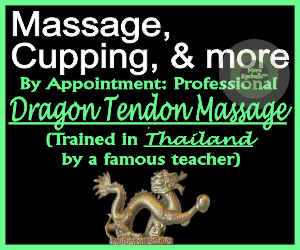
I love a good massage to help me relax.
When my kids were little, they gave me a coupon for Mother’s Day that said “Free Foot Rub.” When I cashed it in, my massage therapists were less than thrilled to redeem my coupon and proceeded to pour a gallon of lotion on my toes, slap them a few times and then after about 90 seconds of effort, called it a day. It did very little to reduce my stress.
From then on, I’ve requested all coupons be from vendors who have LLC after their name. No more fly-by-nights dressed like Ariel and Superman for me.
Most often when people have been struggling with chronic stress, they turn to their doctors for medications like SSRIs (serotonin selective re-uptake inhibitors) or benzodiazepines (e.g., Xanax, Valium and Adivan) to get some relief. Although these medications can help, I think doctors should also prescribe massage as a means of a stress management regime.
Here’s why: Massage provides some vital keys to health, such as reducing muscle tension and soreness, breaking up scar tissue that can cause pain and reducing symptoms of anxiety and depression. Massage has also been found to improve symptoms of digestive disorders, headaches, insomnia, temporomandibular joint pain and fibromyalgia.
Chronic stress isn’t something that just affects our mood or rules our train of thought. It’s felt in our gut (as discussed in our previous article) and it’s held in our muscles. This means we tend to flex when we aren’t truly relaxed. Right now, pay attention to your shoulders. Relax them and see if they drop a little. I bet they did.
What is most impressive about massage is its key component: touch. Humans need touch to thrive. Without it, we will survive, but not thrive.
Touch produces a powerful hormone called oxytocin, which is responsible for bonding, connection, empathy, trust and amazingly is the antidote for depression (the flip side of anxiety). When our muscles are pressed on, tension is released, pain is reduced and oxytocin is produced. Thus we feel more relaxed, less pain and generally happier.
If you work in a company that has a wellness program, ask them to get onsite massage therapy. The benefits are enormous and the program is incredibly easy to implement. Local hospitals like Memorial Health can provide companies with onsite services for chair or table massage at reasonable rates. They can provide segmented massage, which is a short massage of about 15 to 20 minutes on a specific area such as the upper back and neck. With an epidemic of jobs requiring long hours in front of a computer or endless travel, massage therapy is a great way to help reduce work-related muscle pain and relieve stress.
To all the human resources and benefits departments out there in corporate America, listen up. Look at the top five aliments and top five medications in your health care plan. If your employees are dealing with musculoskeletal disorders (e.g., back and neck pain), taking pain meds, taking stomach meds like Nexium, taking antidepressants and you’re seeing a lot of gut-related ailments, chances are you have a stress problem.
Implementing an onsite massage therapy program is a great way to help your employees reduce their stress and show them you care about both their mental and physical health. If you need a few massage therapists, I can recommend two, but their customer service is subpar and you’re going to need a lot of lotion.
Davana Pilczuk has a doctorate in kinesiology and specializes in helping individuals and teams perform better at work, in sports, or in life. Follow her on Twitter @DavanaHPG or contact her at davanapilczuk@hotmail.com.
THREE-PART SERIES
This is the third article in a three-part series examining chronic stress and anxiety. The first article on May 23 explained the science behind stress and anxiety. The second article on June 6 addressed how gut health is linked to stress and anxiety and what you can do about it. If you found this series helpful, please let Davana know via Twitter or email.
Let's block ads! (Why?)




































































































